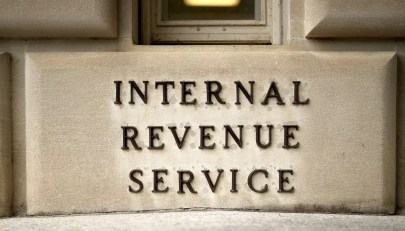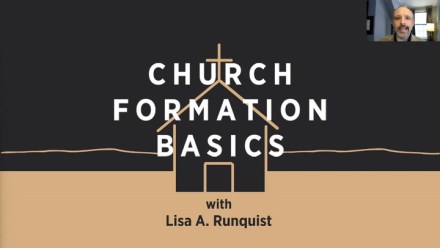Monthly requirements
If your church or organization reported withheld taxes of $50,000 or less during the most recent lookback period (for 2023 the lookback period is July 1, 2021, through June 30, 2022), then withheld payroll taxes are deposited monthly.
Monthly deposits are due by the 15th day of the following month. Note, however, that if withheld taxes are less than $2,500 at the end of any calendar quarter (March 31, June 30, September 30, or December 31), the church or organization need not deposit the taxes.
Tip: The 2023 Church & Clergy Tax Guide is available—order a print copy today (while supplies last) or download the .pdf version now.
Instead, it can pay the total withheld taxes directly to the IRS with its quarterly Form 941. Withheld taxes include federal income taxes withheld from employee wages, the employee’s share of Social Security and Medicare taxes (7.65 percent of wages), and the employer’s share of Social Security and Medicare taxes (an additional 7.65 percent of employee wages).
Semiweekly requirements
If your church or organization reported withheld taxes of more than $50,000 during the most recent lookback period (for 2023 the lookback period is July 1, 2021, through June 30, 2022), then the withheld payroll taxes are deposited semiweekly.
For paydays falling on Wednesday, Thursday, or Friday, the payroll taxes must be deposited on or by the following Wednesday.
For all other paydays, the payroll taxes must be deposited on the Friday following the payday.
Large employers having withheld taxes of $100,000 or more at the end of any day must deposit the taxes by the next banking day. The deposit days are based on the timing of the employer’s payroll. Withheld taxes include federal income taxes withheld from employee wages, the employee’s share of Social Security and Medicare taxes (7.65 percent of wages), and the employer’s share of Social Security and Medicare taxes (an additional 7.65 percent of employee wages).
June 15, 2023: Quarterly estimated tax payments for certain employees and churches
Filing for certain ministers and self-employed workers
Ministers who have not elected voluntary withholding and self-employed workers must file their second quarterly estimated federal tax payment for 2023 by June 15. A similar rule applies in many states to payments of estimated state taxes.
Nonminister employees of churches that filed a timely Form 8274 (waiving the church’s obligation to withhold and pay FICA taxes) are treated as self-employed for Social Security. They are subject to the estimated tax deadlines with respect to their self-employment (Social Security) taxes unless they ask their employing church to withhold an additional amount of income taxes from each paycheck that will be sufficient to cover self-employment taxes (use a new Form W-4, Step 4(c), to make this request).
Payments for unrelated business income tax liability
A church must make quarterly estimated tax payments if it expects an unrelated business income tax liability for the year to be $500 or more. Use IRS Form 990-W to figure your estimated taxes. Quarterly estimated tax payments of one-fourth of the total tax liability are due by April 15, June 15, September 15, and December 15, 2023, for churches on a calendar-year basis. Deposit quarterly tax payments electronically using the Electronic Federal Tax Payment System (EFTPS).
June 30, 2023: Review housing or parsonage allowance designations
Now is a good time to review the 2023 housing or parsonage allowances designated for all ministers on staff. If an allowance designated for 2023 is clearly below actual housing expenses, then the church board should consider declaring a larger portion of the minister’s remaining compensation as a housing or parsonage allowance.
A church is free to designate any portion of a minister’s compensation as a housing allowance but remember that clergy who own their home cannot claim a housing allowance exclusion greater than the fair rental value of the home (furnished, including utilities).
Therefore, the allowance ordinarily should not be significantly more than this amount.
Note: If a date listed for filing a return or making a tax payment falls on a Saturday, Sunday, or legal holiday (either national or statewide in a state where the return is required to be filed), the return or tax payment is due on the following business day.
Note: You must use electronic funds transfer to make all federal employment tax deposits. This is generally done using the Electronic Federal Tax Payment System, a free service provided by the US Department of Treasury. If you don’t wish to use EFTPS, you can arrange for your tax professional, financial institution, or payroll service to make deposits on your behalf. Failure to make a timely deposit may subject you to a 10-percent penalty.



























